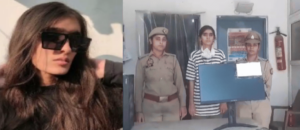Black Rights Matter carries echoes of MLK’s civil rights movement. A look at what is similar, what is different, and what African Americans have faced in between.
On March 7, 1965, civil rights activists, in response to the police killing of fellow-activist Jimmie Lee Jackson the previous month, were marching from Selma in Alabama to state capital Montgomery when they were attacked by state troopers. The crackdown came to be famously known as Bloody Sunday in US civil rights annals.
Undeterred, two days later, Martin Luther King Jr led another march along the same path. This time, when they encountered state troopers, the marchers took a knee. They knelt and prayed before turning back.
Fifty-five years later, as a new set of American marchers – common people, students, occasional policemen even – take a knee following the killing of George Floyd by a white police officer that was caught on camera, could this mark the beginning of something new?
In the days that followed Bloody Sunday, King spoke stirringly of his aim to “achieve a society that can live with its conscience” because, he believed, “the arc of the moral universe is long but it bends towards justice.” Today, as protestors across American cities march in protest over Floyd’s death, they are willing the arc to bend towards justice.
The road to Floyd’s murder has been littered by incidences of violence against African Americans, many becoming catalysts in the country’s civil rights movement and turning points in its knotted history. “Martin Luther King’s memorable observation that ‘a riot is the language of the unheard’ applies as much today as it did back then,” said Daniel Letwin, associate professor of history at the Penn State College of the Liberal Arts, and author of The Challenge of Interracial Unionism.
“This is certainly a historic moment,” he adds, “Not since the 1960s have we seen black street protests of such scope and magnitude, across the country.” In essential ways, the dynamics are familiar… Now, as then, black unrest also drew upon a variety of underlying causes – from a persisting culture of white racism, to the disproportionate experience of run-down urban conditions, inadequate schools, poor healthcare, low pay, unemployment, unresponsive government, mass incarceration, and the like. ”
Racism in policing
Data by statista.com reveals a skewed pattern of African American killings by police. Of 1,000 fatal shootings by police in 2019, more than 23 per cent of the victims were blacks, a higher proportion given that they made up less than 14 per cent of the population.
Connie Hasset-Walker, assistant professor of justice studies and sociology at Norwich University, believes that the roots of racism in American policing, planted centuries ago, still stand strong. “I personally see the US history of slavery (about 250 years long) and then Jim Crow laws (about 80 years long) as very connected to affecting now. To my knowledge, there has never been a reckoning for policing’s slave-patrol origins. When an institution starts off with systematic racism and violence as part of its core mission, how far can it evolve from that if there is never a reckoning / commitment to change? ” she said.
At the time of the American Civil War (1861–1865), said Hasset-Walker, of the 34 states then, 15 were slave states, which created patrols to nip slave revolts and escapes. “The state of South Carolina was the first to create slave patrols in 1704. By the end of the 1700s, every American slave state had slave patrols. They lasted for about 150 years, ending with the South’s loss in the Civil War and the passage of the 13th Amendment to the U.S. Constitution, which outlawed slavery. After that, the former southern slave patrols morphed into police departments that were technically different from slave patrols, but were basically still charged with controlling the freed former slaves, ”she said.
Civil rights movement
About 20 years after the end of the Civil War, America saw the passage of the Jim Crow laws, which dictated a policy of segregation, enforced by police, and which persisted as recently as 1964. It was during this period of segregation that in 1955 , 14-year-old Emmett Till from Chicago, visiting relatives in Mississippi, was accused of making a flirtatious remark to a white woman at a grocery store. Three days later, Till was kidnapped and killed, his body thrown in the river. The accused – the woman’s husband and his half-brother — were later acquitted by an all-white jury.
The civil rights movement gathered steam after this. Montgomery saw a city-wide bus boycott when, on December 1, an African American woman, Rosa Parks, refused to give up her seat for a white man and was arrested for it. The Montgomery Improvement Association, led by a young Luther King Jr, called a boycott of the city’s municipal bus company. It was eventually called off on December 20, 1956, after the segregation seating policy was held unconstitutional.
The years that followed were a time of great turbulence in America, as riots swept city after city. The Watts riots in 1965 in Los Angeles (that started after Marquette Frye, an African American, was pulled over for suspected drunk-driving and roughed up by the police), the Detroit and Newark riots the same year and the unrest in a number of cities following King’s assassination in 1968, were all fueled in large part by economic and social disparity, prejudiced policing and general disaffection, that continues today.
Rodney King, LA riots
On March 3, 1991, Rodney King, a black motorist, was beaten by LAPD officers after a high-speed chase. A man called George Holliday, who witnessed the beating from his balcony, videotaped the incident and gave it to a local TV station. From then on, it went, what we would now call, viral. On April 29, 1992, the four LAPD officers were acquitted, sparking outrage and triggering one of the worst race riots in LA, that lasted six days and left over 50 dead, 2,300 injured.
“King was certainly not the first black man to be beaten up by the police, but it was the first time that someone video-recorded the beating. That video validated what many African Americans knew at that time – that Los Angeles police were very brutal towards black people, ”said Hasset-Walker.
Troy Davis, Central Park 5
More than 15 years after the LA riots, came a moment in American history that many had dreamt of but few had imagined. Barack Obama winning the primary election in November 2008 was a moment that was both a rupture and a healing. But did it fundamentally change anything for the community? For many, it was the execution of Troy Davis that showed that nothing had changed.
Davis was a black man on death row in Georgia, who many believed had been wrongfully convicted for the murder of a police officer. Wrong convictions have been rare. In 2002, convictions against the Central Park Five – teenagers (four blacks and one Latino), accused of raping and grievously assaulting a jogger in Central Park in 1989 – were vacated and the charges withdrawn after over 10 years. The Central Park case – many would remember it from the Netflix series when they see us – had made national news with the current President Donald Trump buying full-page ads in New York newspapers calling for the state to bring back the death penalty. Even after they were exonerated, Trump insisted they were guilty.
For Davis, thousands rallied, appealing to the country’s first Black President to stay the execution. Davis was executed on September 21, 2011, and the night after as protestors filed into Union Square in Manhattan, they merged with another group – Occupy Wall Street. As Keeanga-Yamahtta Taylor wrote in The Guardian, the convergence of the two groups underlined the economic disparity in America and showed the connections between racism and black poverty.
Birth of Black Lives Matter
But it was the shooting of Trayvon Martin, a 17-year-old African American high-school student in Sanford, Florida on February 26, 2012 that started another round of conversation around racial profiling, prompting even President Obama to say, “If I had a son, he’d look like Trayvon “. George Zimmerman, a neighborhood watch volunteer who claimed he had shot Trayvon in self-defense, was acquitted a year later. The prosecution had contended that Zimmermann had followed the hoodie-clad boy because he assumed he was a criminal but the six-women jury rejected it. It was Zimmerman’s acquittal that gave rise to a hashtag and a movement.
#BlackLivesMatter, started in 2013 by Alicia Garza, Patrisse Cullors and Opal Tometi, has now grown into a global network whose members “organize and build local power to intervene in violence inflicted on black communities by the state and vigilantes.” The BLM movement has been at the forefront of subsequent street demonstrations, most notably following the death of Michael Brown in Ferguson near St Louis and of Eric Garner in New York City.
Cornel West, a public intellectual and a fearless voice in left-wing politics, traces the current unrest to the failures of Obama. West, who had once shared the stage with Obama, is now one of the most vocal critics of many of his policies. In a recent interview to CNN, he said, “The Black Lives Matter movement emerged under a black president, black attorney general, and black homeland security and they are supposed to deliver.” Black faces in high places, he said, succumbed to the “capitalist economy” and “militarized nation-state”.
Tamir Rice and later
The shooting of 12-year-old Tamir Rice in 2014 by a police officer (Rice was carrying a replica toy Airsoft gun), of Ahmaud Aubrey, who was tagged and killed by armed white residents while jogging in his Georgia neighborhood and of Breonna Taylor In Louisville this March by plainclothes policemen, who barged into her apartment looking for someone else, all brought about a cycle of debate and protests. Could the current uprising be a crack, however slight, that will let in the light?
in the early days of the Floyd protests, Trump had tweeted in support of using military force to quell the riots. “Law-and-order demagogues seek to discredit black rebellion as a mindless orgy of violence committed by thugs and criminals, encouraged by radical agitators and spineless, liberal officials,” said Letwin. But there are signs that this time things could be different: “For one, street protests appear much more diverse, with a higher participation of whites and Hispanics alongside African Americans. The unrest is no longer so confined as it once was to black neighbors. Certainly, the ease with which acts of police violence can be recorded and publicized has changed the picture as well. “
Hasset-Walker, too, pointed at a critical difference. “What is different about the murder of George Floyd is how quickly the police officer, Derek Chauvin, who kneeled on Floyd’s neck, was charged with third degree murder.”
Written by Devyani Onial sorce indianexpress










More Stories
Why are right-wing parties winning the European Union elections?
Why is the weather pattern changing in countries around the world?
Pakistan Retaliatory Strikes In Iran, Day After Warning of “Consequences”